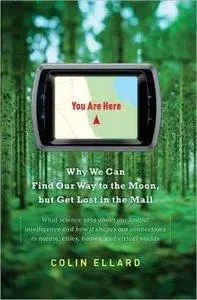Colin Ellard, "You Are Here: Why We Can Find Our Way to the Moon, but Get Lost in the Mall"
English | 2009 | ISBN: 038552806X, 0767930754 | 336 pages | EPUB, MOBI | 4 MB
English | 2009 | ISBN: 038552806X, 0767930754 | 336 pages | EPUB, MOBI | 4 MB
A fascinating exploration of human navigation, both feat and foible, in the age of GPS and GoogleEarth.
We live in a world crowded by street signs and arrows. With the click of a computer mouse we can find exact directions to just about anywhere on earth, and with a handheld GPS we can find our precise latitude and longitude, even in the remotest of places. But despite all our advancements, we still get lost in the mall, can’t follow directions to a friend’s house and, on camping expeditions, take wrong turns that can mean the difference between life and death.
Many other species, however, have an innate sense of direction. Ants display surprisingly sophisticated behavior, traveling great distances without wasting a step. Monarch butterflies and migrating songbirds pilot even greater expanses, thousands of kilometers in some instances, to targets that they might never even have seen before. A homing pigeon can be driven halfway across a continent in a lightproof box and then, on release, find its way—unerringly—back to its loft. What is truly amazing, though, is that humans, the only animal that has come close to understanding how some of these magnificent navigational feats are performed, are rendered helpless by dense bush or even an unexpected turn in a maze of cubicles.
In You Are Here, psychologist Colin Ellard explains how, over centuries of innovation, we have lost our instinctive ability to find our way, as we traverse vast distances in mere hours in luxurious comfort. Some cultures, such as the Inuit, retain the ability to navigate huge expanses of seemingly empty space, as their survival depends on it, but the rest of us have been so conditioned by our built-up world that we don’t really know how to get from point A to point B.
Drawing on his exhaustive research, Ellard illuminates this disconnect from our world with great clarity and explains what it means, not just for our forays into the wilderness but for how we construct our cities, our workplaces, and even our homes and virtual worlds. Architects and city planners, he suggests, need to consider human behavior when designing human environments, and we all need to recognize that we are part of, not isolated from, the space around us.



